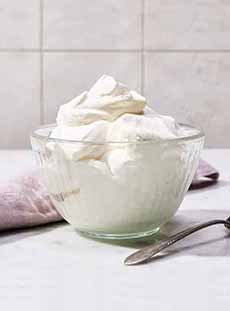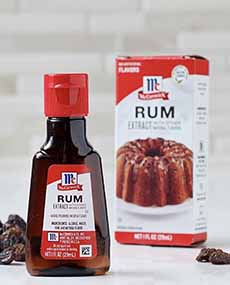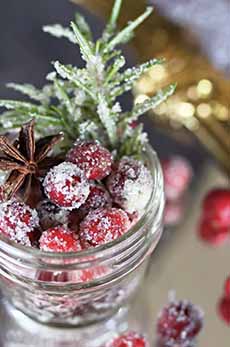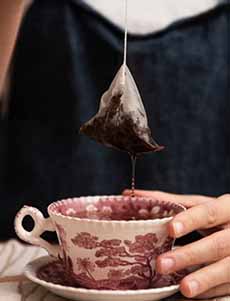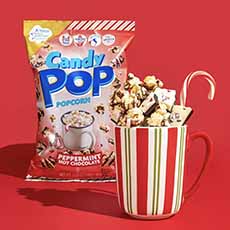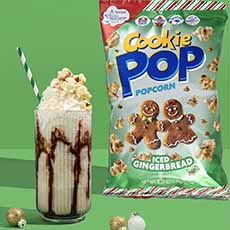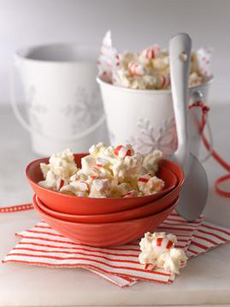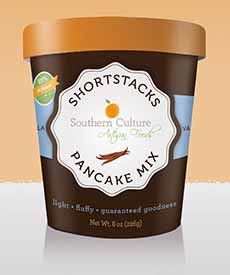|
December 24th is National Eggnog Day, but we didn’t want to wait until then to share these eggnog recipes and many more below.
“Eggnog on a plate” is what Florence Shaw calls her creamy eggnog pie, the first recipe. It delivers the rich, wonderful flavor of a glass of eggnog.
And it’s so easy to make, especially if you purchase the eggnog and the pie crust. There is no alcohol in this recipe, just some rum extract (or real rum).
Spell it egg nog or eggnog, whether you’re drinking it or enjoying this eggnog pie, eggnog cheesecake, eggnog fudge, eggnog French toast, or any of these recipes, you’re in for a treat.
We’re bringing this eggnog pie to our neighbors’ New Years Eve fête. It’s easy to make and you don’t even need to decorate it (although we’re using easy decorations).
> The history of eggnog.
> The history of pie.
> More differences between pies and tarts.
> The different types of pie and pastry: a photo glossary.
> Specialty eggnog recipes.
> December 24th is National Eggnog Day.
> The history of eggnog.
> There are more eggnog drinks and desserts recipes below.
RECIPE: EGGNOG CREAM PIE
About the crust: You can also take the easy way out with a store-bought crust, and skip the first two steps. Store-bought eggnog is fine.
Because we personally prefer tart crusts to pie crusts, we substituted a tart crust recipe. See the differences between pie and tart crusts in the footnote* below.
Prep time is 30 minutes + chilling time. Baking is 10 minutes + cooling time.
Ingredients
Dough for single-crust pie
1 tablespoon unflavored gelatin
1/4 cup cold water
1/3 cup sugar
2 tablespoons cornstarch
1/4 teaspoon salt
2 cups eggnog
1 teaspoon vanilla extract
1 teaspoon rum extract (substitute 3 tablespoons of rum)
1 cup heavy whipping cream, whipped
Ground cinnamon or nutmeg, optional
Optional garnishes: freshly-ground nutmeg, chocolate shavings, raspberries, whipped cream
Preparation
1. MAKE the crust. On a lightly floured surface, roll the pie dough to a 1/8-inch-thick circle and transfer it to a 9-inch pie plate. Trim the crust to 1/2 inch beyond the rim of the plate. Using your fingers, flute the edge of the crust. Refrigerate for 30 minutes. Preheat the oven to 425°F; you will be using the lower rack.
2. BAKE the crust. Line the crust with a double thickness of aluminum foil. Fill the crust with pie weights (substitute dried beans or uncooked rice). Bake on the lower oven rack for 20 to 25 minutes until the edge is golden brown. Remove the foil and weights, and bake for three to six minutes longer until the bottom is golden brown. Cool the pie crust on a wire rack.
3. MAKE the filling. Add the water to a small bowl and sprinkle the gelatin over the water. Let stand for several minutes (typically 5 to 10 minutes) to allow it to fully bloom (absorb the water and soften properly before you heat it up to dissolve it).
4. COMBINE the sugar, cornstarch, and salt in a saucepan. Stir in the eggnog until smooth. Bring the mixture to a boil. Cook and stir for two minutes or until thickened.
5. STIR in the gelatin mixture until dissolved. Remove the filling from the heat and cool to room temperature. While the filling cools, whip the cream†. Once the filling has cooled…
6. STIR in the extracts and fold in the whipped cream. Pour the filling into the cooled crust. Refrigerate the pie until firm, either covered with plastic wrap or in an airtight container, until ready to serve (it will keep for up to 3 days‡).
7. DUST the pie with cinnamon or nutmeg before serving. We used nutmeg and added chocolate shavings plus raspberries, although we’d have loved the time to make a sugared cranberries and sugared rosemary sprigs garnish.
8. TO SLICE, dip the knife in hot/warm water and wipe it between slices for cleaner slices.
MORE DAYS TO CELEBRATE WITH THIS RECIPE
January 23rd is National Pie Day
February is Great American Pie Month
December 24th is National Eggnog Day
MORE EGGNOG RECIPES
Chocolate Eggnog Recipe
Classic Eggnog Recipe
Coconut Eggnog
Cranberry Eggnog Recipe
Eggnog Martini Recipe
Eggnog White Russian Recipe
Flaming Eggnog Recipe
Low Calorie Eggnog Recipes
Pumpkin Eggnog
Spiced Chocolate Eggnog
EGGNOG-FLAVORED FOOD RECIPES
Eggnog Crumble Bars Recipe
Eggnog French Toast Recipe
Eggnog Gingerbread Mini Cheesecakes Recipe
Eggnog Ice Cream Recipe
Eggnog Mini Bundt Cakes Recipe
Eggnog Panettone Ice Cream Cake Recipe
Eggnog Panna Cotta Recipe
Eggnog Streusel Bars Recipe
Eggnog Truffles Recipe
Eggnog Whipped Cream Recipe
Eggnog Wreath Cookies Recipe
Spiced Eggnog Cheesecake
White Chocolate Eggnog Fudge Recipe
THE HISTORY OF CORNSTARCH
Cornstarch has been used for thousands of years, but it didn’t become a household staple until 1842, when Thomas Kingsford invented modern cornstarch in 1842 in Jersey City, New Jersey.
Cornstarch is made from the endosperm of corn—the part of the kernel that contains the most energy for the seedling. It’s the pure starch extracted from corn kernels, milled into fine white powder. Because it’s made from only the endosperm, cornstarch is gluten-free.
Kingsford used a process similar to wheat starch extraction to isolate cornstarch from corn kernels.
He originally intended cornstarch to be a laundry starch. Until the early 1850s, cornstarch was used primarily for starching laundry and for other industrial uses [source].
In 1854, John Polson of Brown & Polson, in Paisley, Scotland, patented a method to produce pure culinary starch from maize. It was sold as “Patented Corn Flour.”
In a parallel world, Brown & Polson were muslin manufacturers who had been producing laundry starch for the Paisley shawl industry. But cornstarch was found to have many applications, from food and beverages to cosmetics and pharmaceuticals. It was also originally used as a food for babies and invalids.
In today’s kitchen, cornstarch is used as a thickening agent in sauces, gravies, soups, and puddings, custards, and pie fillings. Denser than flour, less cornstarch is needed to thicken a liquid (the starch molecules absorb water and thicken the mixture).
Affordable and versatile, cornstarch quickly became popular in the U.S.
Across the pond, in 1854, John Polson of Brown & Polson in Paisley, a Scottish maker of custard powder, patented a method for producing pure culinary cornstarch from maize (the difference between corn and maize).
Same product, different words: The U.S. says “cornstarch,” the U.K. says “cornflour.” It’s the same thing; both are compound nouns.
________________
*Pie vs. tart crust: A pie crust typically has a flakier, lighter texture and can include a top crust. Tarts only have a bottom crust, and the tart crust is crumbly instead of flaky.
Tart crusts have a pronounced buttery flavor due to the higher proportion of butter compared to pie crusts. Tart crusts also have higher proportion of sugar.
While tart dough uses only butter as its fat, pie crusts can be made with butter, lard, or oil. Lard produces the flakiest crust due to its higher melting point, but we personally prefer the rich flavor of butter.
**Real rum vs. rum extract substitution: Use 3 tablespoons of rum to replace 1 teaspoon of rum extract. Per McCormick, 2 teaspoons of rum extract equals 1 tablespoon of dark rum, or 1 tablespoon of rum extract equals 5 tablespoons of light rum.
†Hand-whipping takes 3–4 minutes to reach soft peaks, when the cream starts to thicken. Continue to whip until the cream is more solid—no more than 9 minutes total whipping time. If you over-whip, the cream will become grainy and begin to turn to butter (no kidding).
‡To make ahead and freeze: Once the pie is chilled until firm, cover it with storage wrap and aluminum foil or place it in a freezer-safe airtight container Freeze for up to two months. Thaw it in the refrigerator overnight, then garnish and serve.
|


